

Matt Campbell
2026 MG U9 review
4 Hours Ago
The Mahindra Pik-Up sits in a rapidly shrinking corner of the ute market, with a sharp starting price and a focus on hard work.

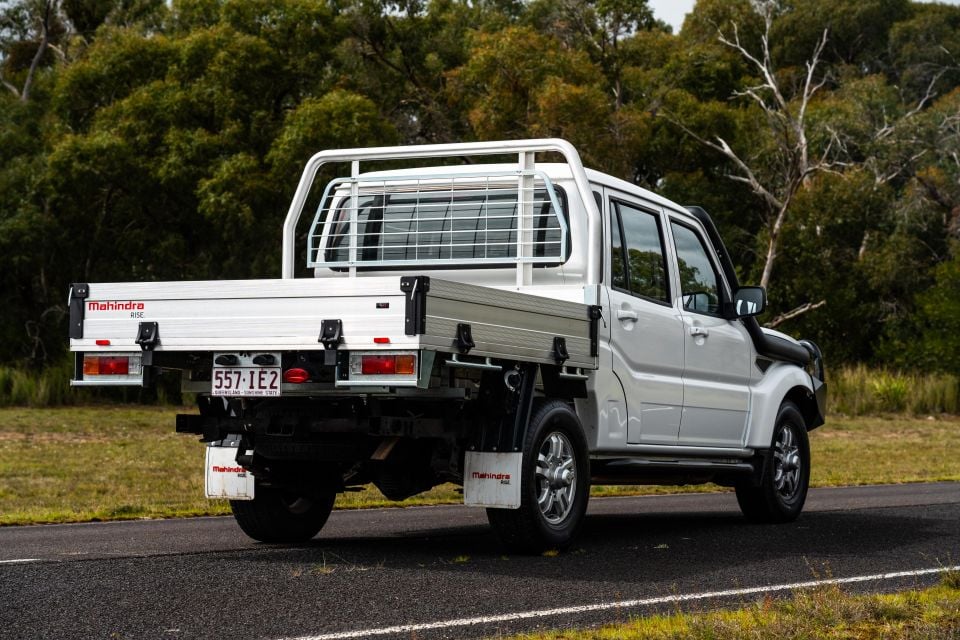

Where expert car reviews meet expert car buying – CarExpert gives you trusted advice, personalised service and real savings on your next new car.
Utes are very, very expensive these days.

You can pay more than $150,000 for an American pickup truck, and the range-topping Ford Ranger Raptor is more than $90,000. Even the cheapest dual-cab Ranger with four-wheel drive is almost $50,000 before on-road costs.
The good old-fashioned work ute isn’t dead yet, though.
Mahindra, the Indian manufacturing giant, majors on rugged reliability for budget-oriented buyers. It’s pushing hard in Australia at the moment with new SUVs, but its bread and butter remains the Pik-Up ute.
With a sticker price below $40,000 before on-road costs, there’s no doubt it’s affordable alongside its more modern rivals. Is cheap actually cheerful here, or should you spend more on a base version of a rival ute?
The equivalent Ford Ranger to the Pik-Up is a 4×2 single cab-chassis ($36,880), while the equivalent HiLux is a Workmate 2.7 ($37,545).
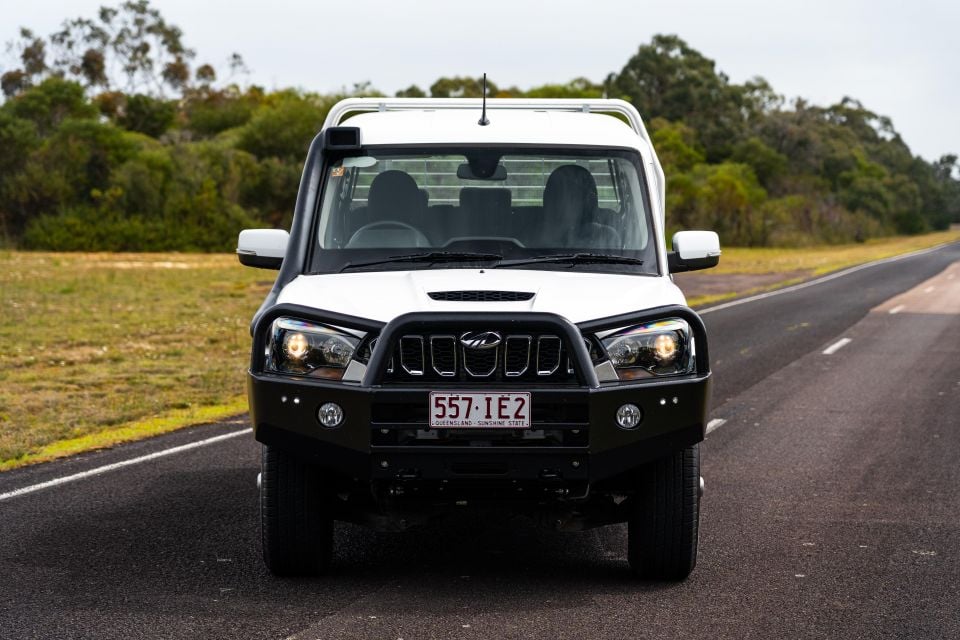
They’re both utilitarian and stripped out, like the Mahindra, but they feature entry-level engines and two-wheel drive powertrains instead of the four-wheel drive setup fitted to the Pik-Up.
In the world of Chinese utes, the GWM Ute Cannon cab chassis 4×4 is priced from $39,990 before on-roads, while the LDV T60 Max kicks off at $43,148 before on-roads.
Mahindra Pik-Up pricing:
All prices are drive-away
Buy your new car without the stress. It's fast, simple and completely free.

Great service from Travis and team, second time I have used this business would not hesitate to recommend them to anyone
Craig C.
Purchased a Ford Ranger in Sunshine Coast, QLD
CarExpert helped Craig save thousands on his Ford Ranger, now let us save you on your next new car.
Find a dealThe Pik-Up majors on simplicity inside.

There’s a small touchscreen slotted into a basic, upright dashboard, and the phrase “soft-touch plastics” clearly wasn’t mentioned during development. Then again, that isn’t really the point here.
The driver and passenger sit in generously padded seats that offer a commanding view of the road ahead, and even without a reach-adjustable steering wheel it’s easy to get comfortable as a tall driver.
The seat cloth feels hard-wearing, and the fold-down armrest is a real Range Rover-style touch… except for the fact that you need to lift it up to access the seatbelt buckle.
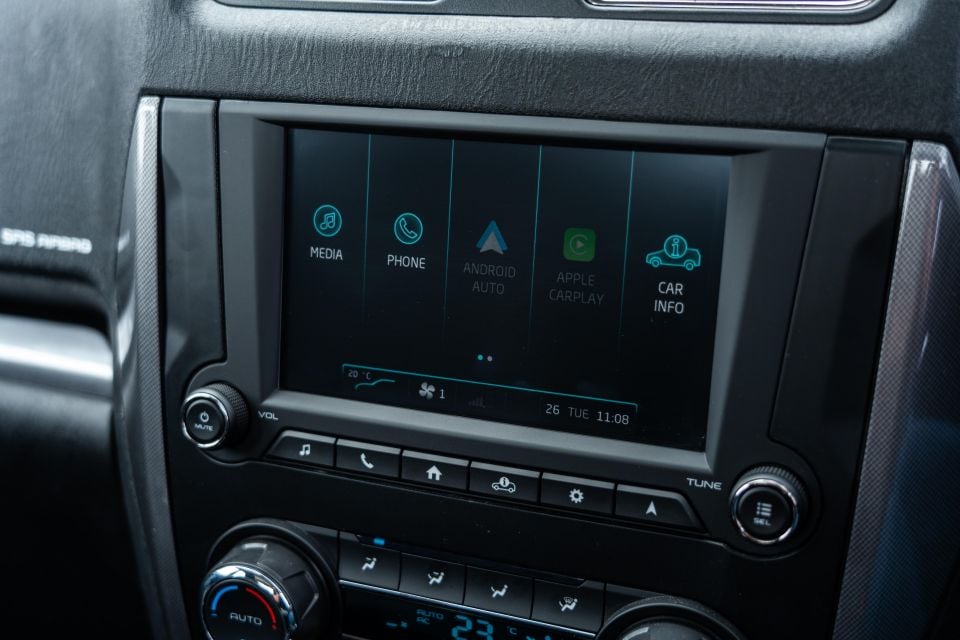
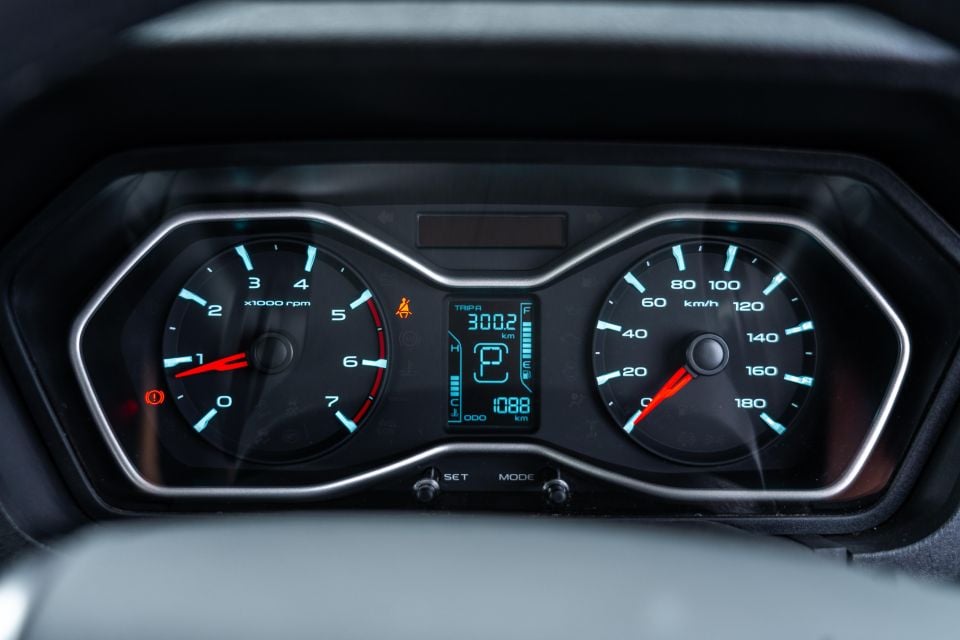
The infotainment system is utilitarian, with basic graphics and an awkwardly offset reversing camera view that makes parking tricky.
The inclusion of Apple CarPlay and Android Auto allows you to sidestep the factory system for the most part, and means what’s a fairly basic system will always have an up-to-date feature set.
With simple analogue instruments, there’s no digital dash views or trip computer tricks to report. A digital speedo would be a welcome addition, however.
The open centre console has an array of cupholders, all of which are hard, slippery, and slightly awkward if you need them to hold a regular coffee cup or 600ml drink bottle. There are plenty of spots to slot your wallet or phone though.
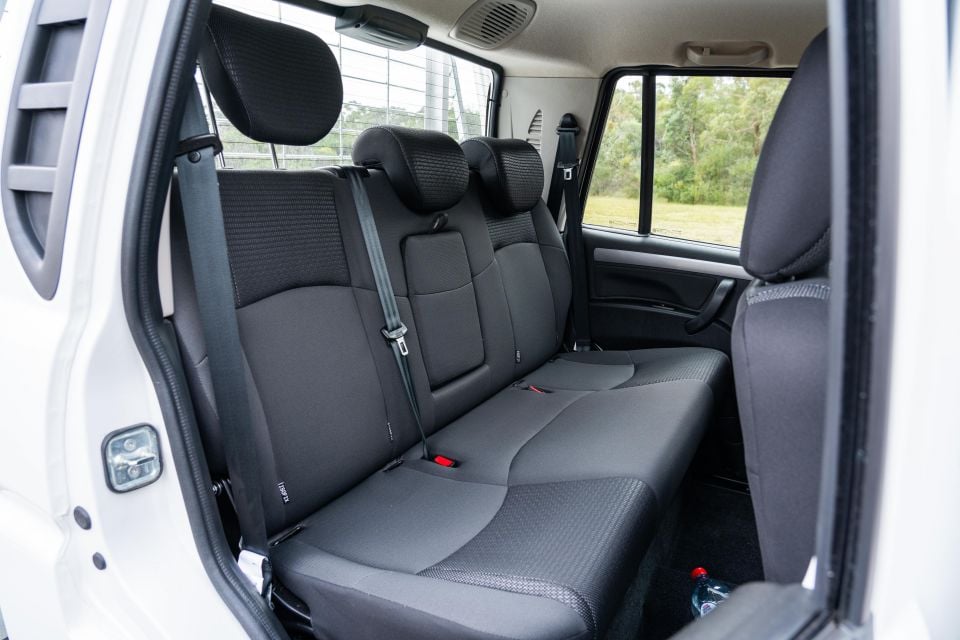
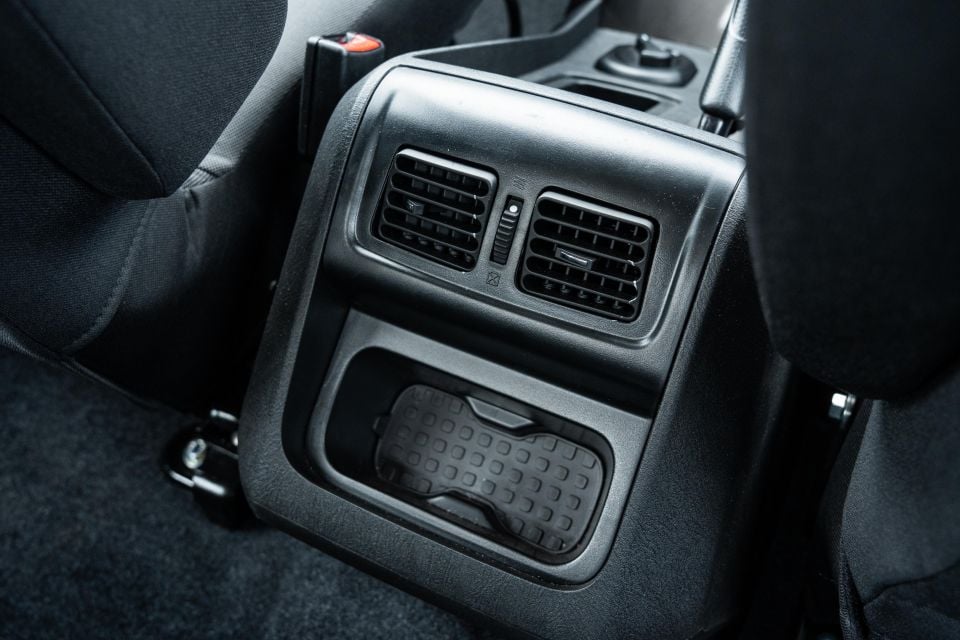
Rear seat space is a mixed bag. Headroom is excellent thanks to the upright, boxy cabin, but legroom is poor behind anything but a very short driver.
The rear air vents are a welcome addition, as is the fold-down central armrest. A trio of top-tether points feature, along with two ISOFIX anchors for child seats.
It’s quite a step up into the cabin, which doesn’t have any side steps, which means loading a child into the rear can be tough if you’re shorter.
Then again, the average Pik-Up owner is more likely to have an Australian Shepherd back there than kids on the school run.
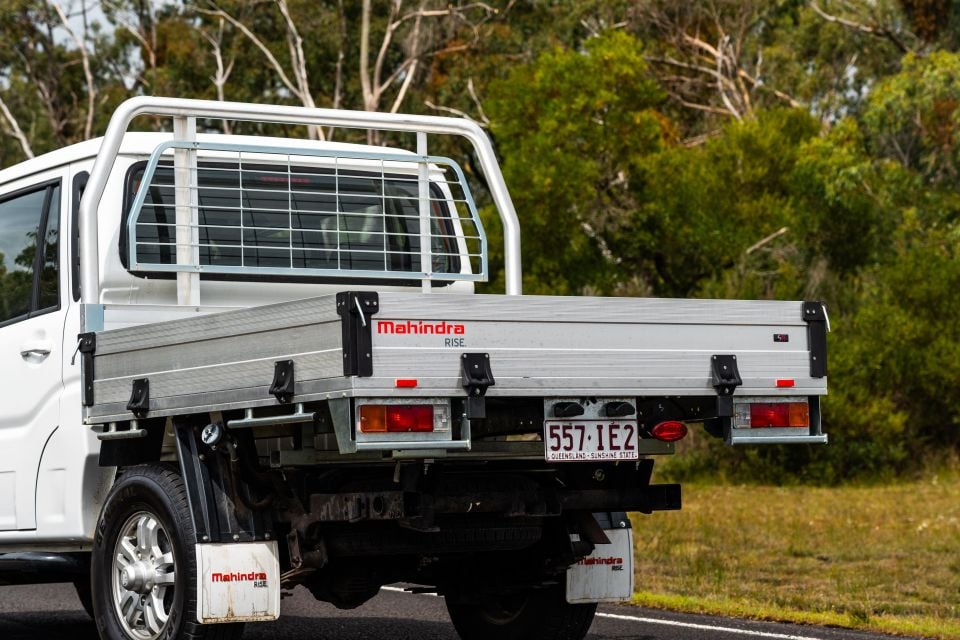
The tray on our tester was a Mahindra genuine tray, complete with a sports bar and mesh to protect the rear window as part of the Work Pack which also brings a snorkel and bull bar.
Both variants of the 2024 Mahindra Pik-Up feature a 2.2-litre four-cylinder turbo-diesel engine with 103kW of power and 320Nm of torque.
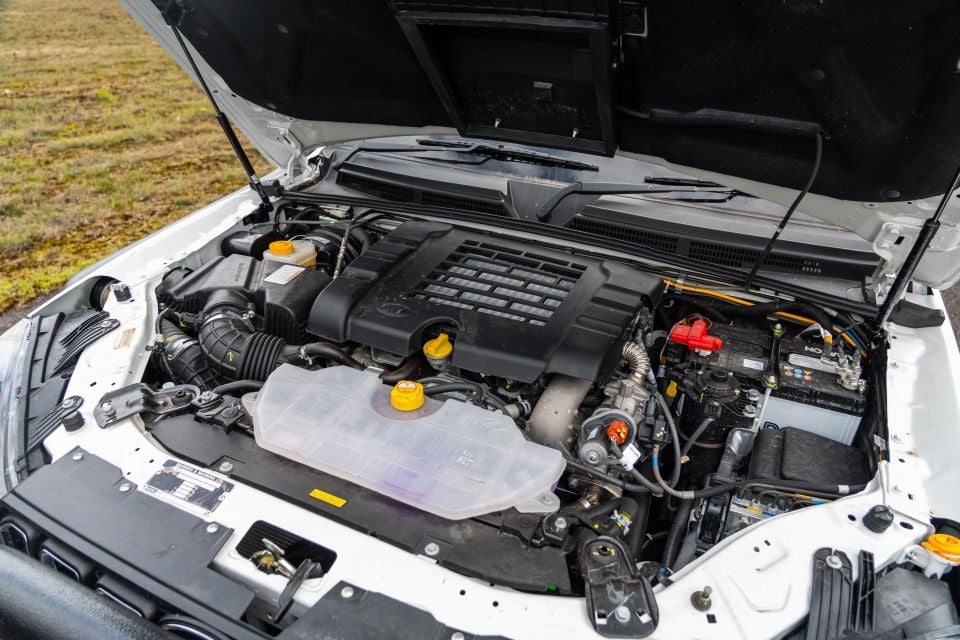
It’s mated to an Aisin-sourced six-speed automatic transmission and a part-time four-wheel drive system. Mahindra claims the Pik-Up S11 4×4 uses 9.3L/100km on the combined cycle. The Pik-Up S11 has an 80-litre fuel tank.
The Pik-Up S11 now meets Euro 6 emissions standards, with Mahindra claims it produces 70 per cent less nitrogen oxide emissions than its predecessors, equating to 61.6mg/km.
Off-road, you get a claimed 210mm of ground clearance and a 500mm maximum wading depth. Approach angle is 34mm, departure angle is 15mm due to the long overhang on the metal tray.
Turn the key, and the Pik-Up bursts to life with a classic diesel rattle.
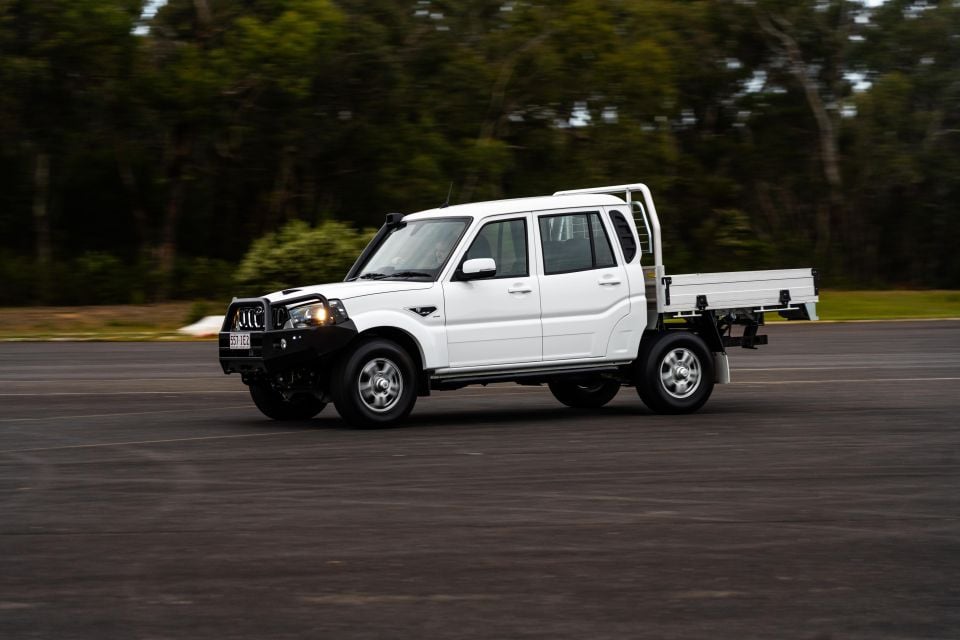
It’s not the last word in refinement, but it does have enough punch to make the Pik-Up feel quick enough around town. Peak torque comes on tap at just 1500rpm, and the six-speed transmission is smart enough to hold gears until it starts to taper off at 2800rpm.
At low revs, the engine’s gruff note is well suppressed in the cabin; bury your foot and force it to rev a bit harder, and it can be a shouty in there.
With heavy, slow steering and a bigger turning circle than we’ve come to expect from a Ranger or HiLux, it’s not the most natural companion in the city.
Parking in tight spaces requires lots of arm twirling, and you need to be careful of the extremities of the tray given the reversing camera doesn’t offer much perspective.
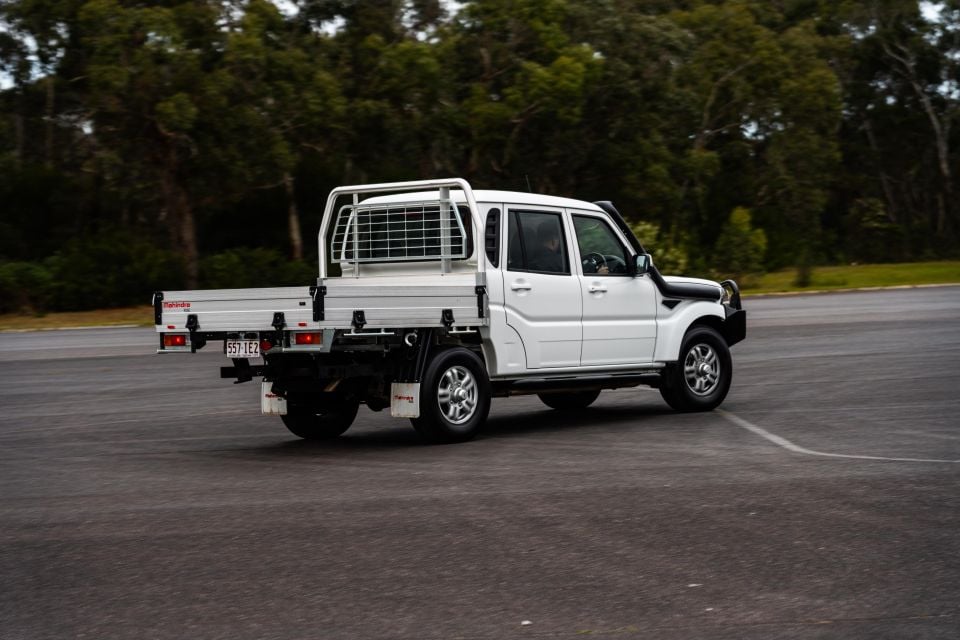
In town, the ride is firm – as you’d expect of a work vehicle designed to live life with a tonne in the tray.
It slaps into potholes and bounces over speed bumps, although at higher speeds it settles down better than you’d expect. Check out the sine wave test in Paul’s video for a bit more on that.
Road noise is noticeable above around 60km/h from the tyres, and the upright pillars and optional snorkel make themselves known in the form of plenty of wind whistle.
Performance also tapers off at highway speeds. Where it gets off the mark well enough, the run from 80-120km/h took more than 17 seconds. That means if you are gearing up to overtake slower-moving traffic on the open road, you’d best get a run-up.
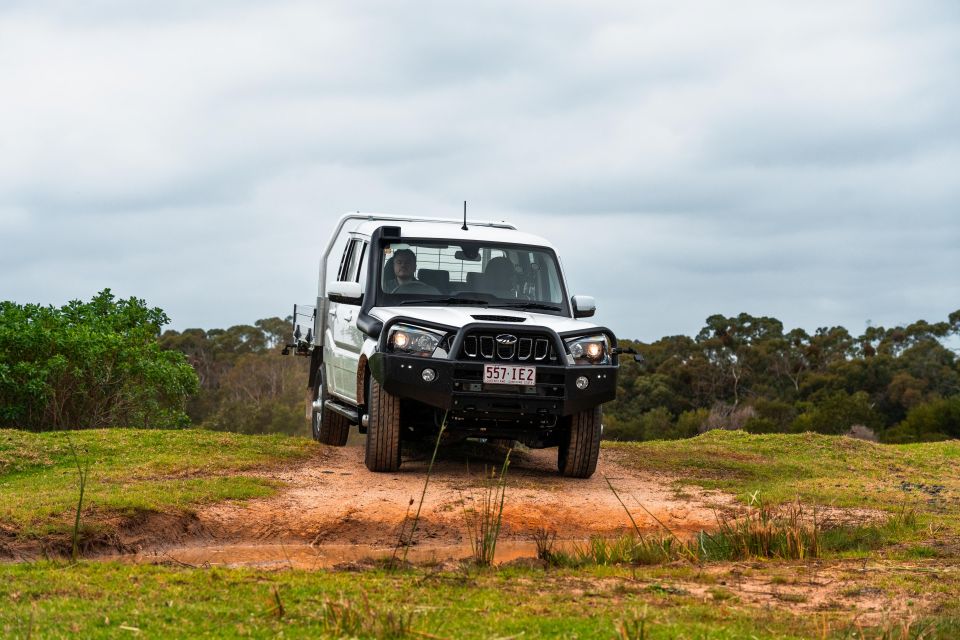

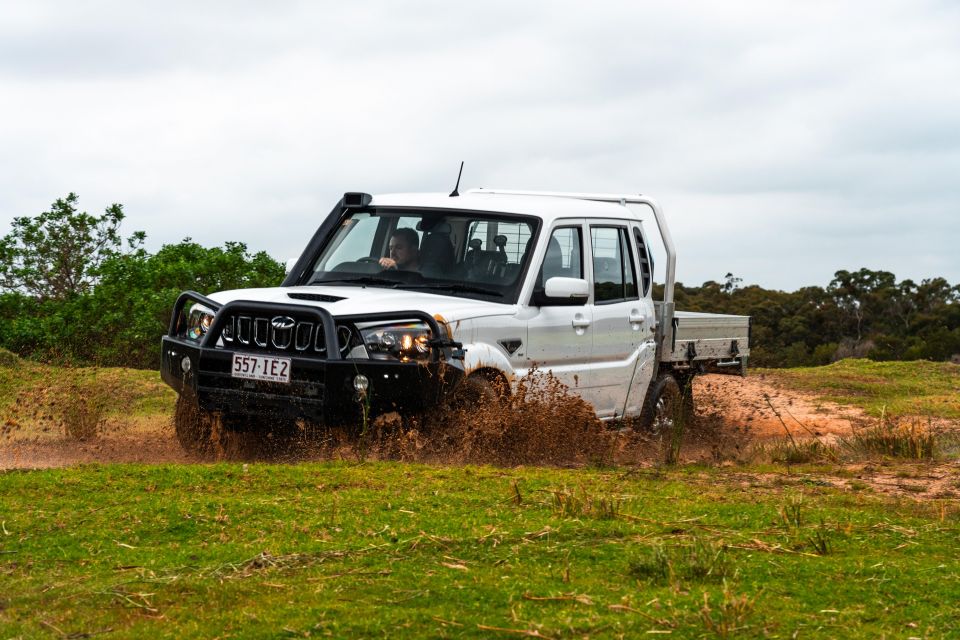

It’s really geared for hauling heavy things at lower speeds, which is apt given Mahindra sells the Pik-Up alongside its range of farm machinery in Australia.
Where the Pik-Up really shines is off-road, where it’s an overachiever like the Scorpio.
Although the Eaton auto-locking rear differential is a bit crude in how it activates, it means you can get through awkward offset moguls in two-wheel drive, and can cover for what appears to be a fairly lax traction control system.
It waltzed up our hill in testing, even from a standing start and without the benefit of all-terrain tyres.
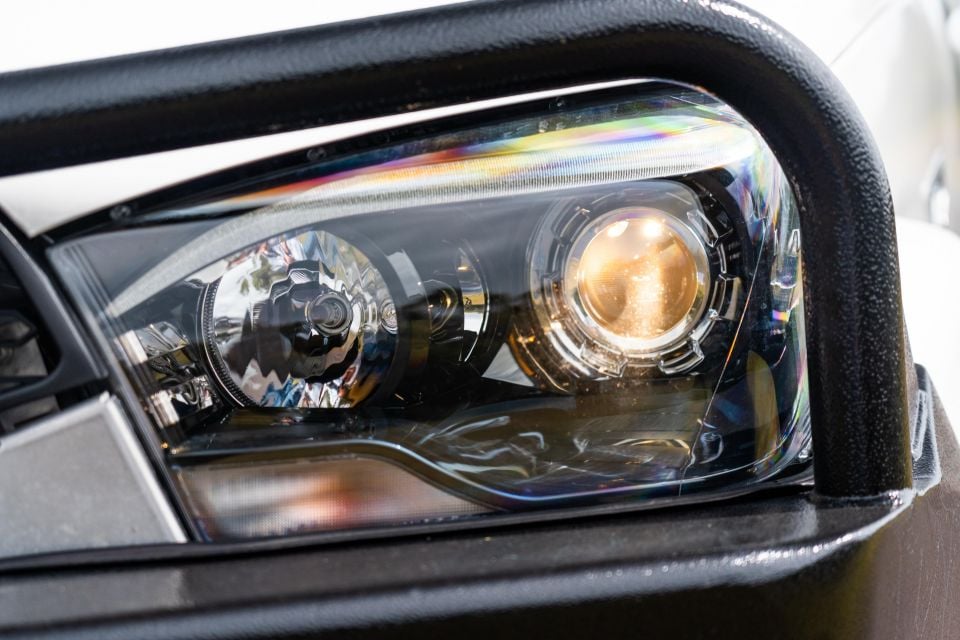



Pik-Up S11 highlights:
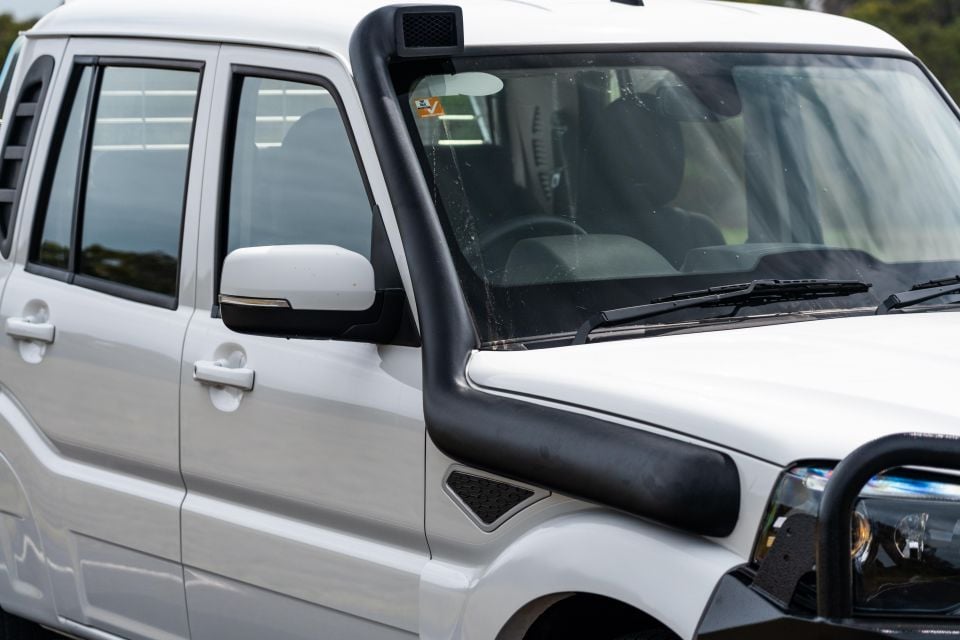
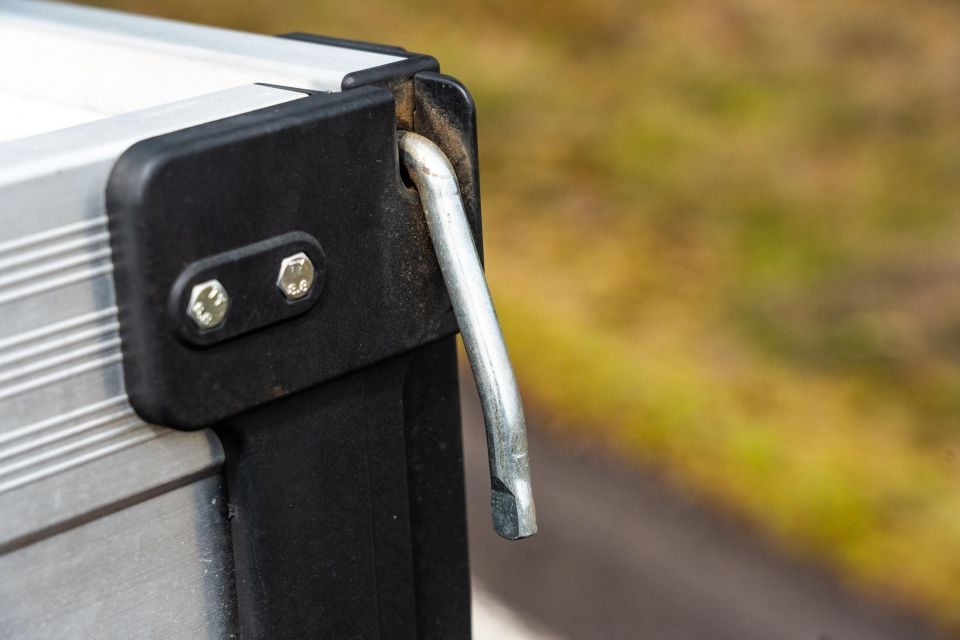
Mahindra offers the following genuine accessories:
The Mahindra Pik-Up received a three-star safety rating from ANCAP in 2012, but it has since expired.

Where expert car reviews meet expert car buying – CarExpert gives you trusted advice, personalised service and real savings on your next new car.
It comes with dual front airbags and a reversing camera. There’s no active safety equipment like autonomous emergency braking.
The Pik-Up S11 is covered by a five-year, 150,000 kilometre warranty with four years of capped-price servicing and five years of roadside assistance.
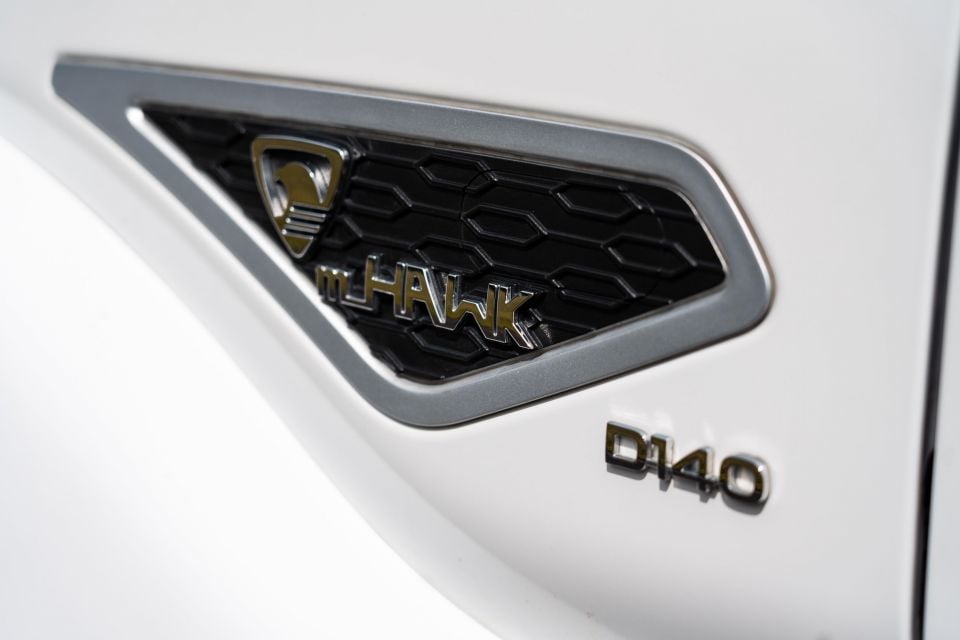
Service pricing is as follows:
The Pik-Up won’t be giving a Ford Ranger Wildtrak any sleepless nights, but that isn’t really the point.
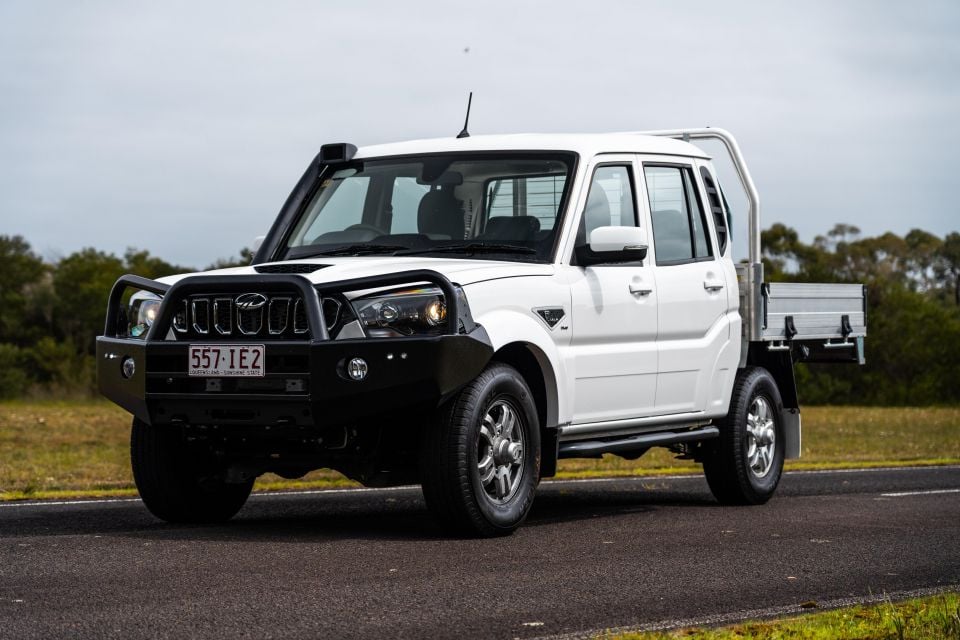
If you want a ute to take the kids to school, swing by the shops, and carry around a few bags of potting mix on the weekend, this isn’t it.
It’s an old-fashioned work ute designed to be ridden hard and put away wet, and viewed through that lens has plenty to offer anyone who’s looking for an old-school farm truck… but doesn’t want to wait two years, or pay through the nose for a LandCruiser 70 Series.
At $40,000 drive-away with a tray, bull bar, and snorkel, there’s plenty of capability built into the bones of this beast.

Click the images for the full gallery
Where expert car reviews meet expert car buying – CarExpert gives you trusted advice, personalised service and real savings on your next new car.
Scott Collie is an automotive journalist based in Melbourne, Australia. Scott studied journalism at RMIT University and, after a lifelong obsession with everything automotive, started covering the car industry shortly afterwards. He has a passion for travel, and is an avid Melbourne Demons supporter.


Matt Campbell
4 Hours Ago


William Stopford
20 Hours Ago


Josh Nevett
21 Hours Ago


Ben Zachariah
2 Days Ago


CarExpert.com.au
2 Days Ago


Damion Smy
2 Days Ago